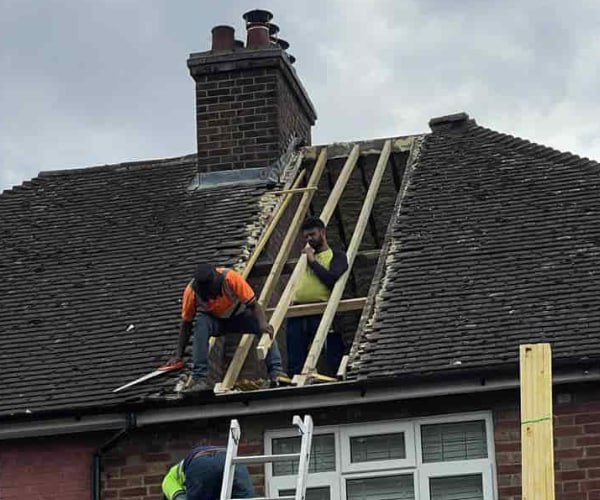The Crucial Role of Underlayment in Slate Roof Repairs
Introduction: Slate roofs are renowned for their timeless beauty and exceptional longevity, often lasting for a century or more. However, even the most durable slate roofs may require repairs over time due to weathering, wear and tear, or damage. When it comes to slate roof repairs, one essential component that should never be overlooked is the underlayment. In this blog post, brought to you by STW Roofing Flitwick, we will delve into the pivotal role of underlayment in slate roof repairs and why it is a crucial element in maintaining the integrity of your slate roofing system.
Understanding Underlayment
Underlayment, often called roofing felt or membrane, is a protective layer installed beneath the outer slate or tile roofing material. Its primary function is to provide an additional barrier against moisture, water infiltration, and other potential threats that could compromise the roof’s structural integrity and performance.
The Crucial Role of Underlayment in Slate Roof Repairs
- Waterproofing
One of the primary roles of underlayment in slate roof repairs is waterproofing. While slate is naturally water-resistant, it is not entirely impervious to moisture. Underlayment serves as a secondary defence against water infiltration, preventing rainwater, melting snow, or other sources of moisture from seeping through gaps, cracks, or damaged slate tiles and into the underlying roof structure. This is especially critical during repair work when sections of the slate roof may be temporarily removed or exposed.
- Protection for the Roof Deck
Underlayment acts as a shield for the roof deck or substrate against moisture-related damage. If moisture were to penetrate the slate roofing material, it could lead to rot, decay, or the growth of mould and mildew within the roof’s structure. By preventing moisture from reaching the roof deck, underlayment helps preserve its integrity and extends its lifespan.
- Temporary Cover
Underlayment is vital as a temporary protective barrier in slate roof repairs. When sections of the slate roof are removed for repair or replacement, the underlayment provides immediate coverage. This ensures that the roof remains waterproof until the repair work is completed, preventing potential water damage to the interior of the building.
- Enhanced Efficiency
Underlayment can contribute to the overall efficiency of the slate roofing system. It provides an additional layer of insulation, helping to regulate indoor temperature and potentially reducing energy costs. Additionally, it creates a smooth and even surface for installing new slate tiles, improving the roof’s aesthetics and performance.
Selecting the Right Underlayment
Choosing the appropriate underlayment is essential for the success of slate roof repairs. Consider the following factors:
- Material: Roofing underlayment materials vary, including asphalt-saturated felt, synthetic materials, and rubberised membranes. The choice depends on climate, budget, and individual preferences.
- Thickness: The thickness of the underlayment is a critical consideration. Thicker underlayment typically offers better protection and durability. Consult with a roofing professional to determine the ideal thickness for your slate roof.
- Breathability: Some underlayment materials are designed to be breathable, allowing moisture to escape from the roof structure while still providing waterproofing. This can help prevent trapped moisture that can lead to damage.
Conclusion: In slate roof repairs, underlayment plays a pivotal role in preserving your roofing system’s structural integrity and longevity. It is a vital layer of protection, safeguarding your roof deck and interior from moisture-related damage.
Call us on: 01525 659 598
Click here to find out more about STW Roofing Flitwick
Click here to complete our contact form and see how we can help with your roofing needs.

